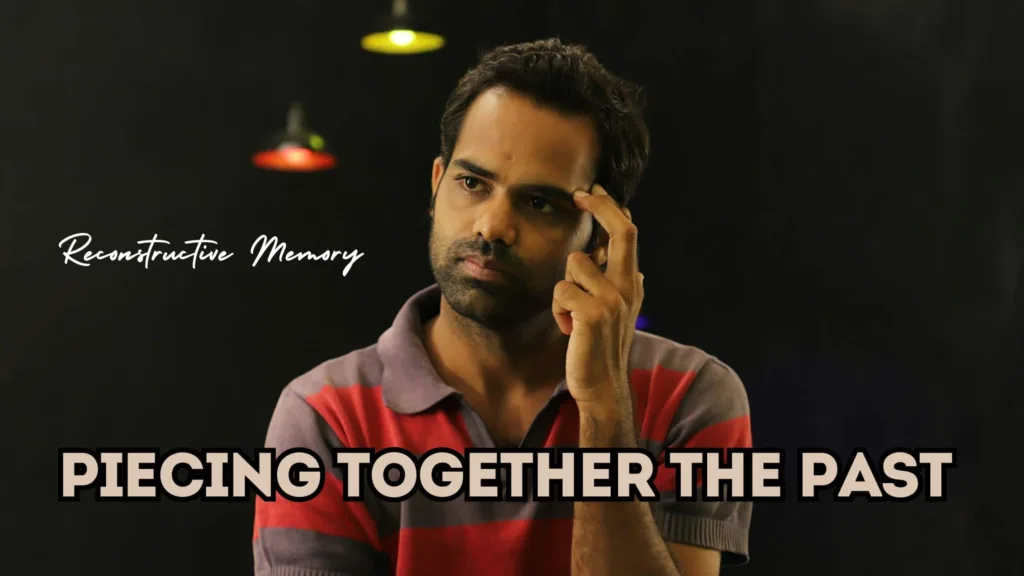Memory isn’t like a perfect video of past events; instead, it’s a changing process that rebuilds experiences every time we remember them. This process is called reconstructive memory, and it shows how complex and sometimes unreliable our memories can be. In this article, we’ll look at what reconstructive memory is, how it works, and why it’s important in different parts of life.
What is Reconstructive Memory
Reconstructive memory means that when we remember something, we don’t just play back a perfect recording of it. Instead, we piece together bits of information to form the memory. This idea was first studied in detail by a British psychologist named Sir Frederic Bartlett in the early 1900s.
For example, if you went to a party, you might not remember every single detail exactly as it happened. Instead, your memory of the party will be influenced by what you think usually happens at parties, who you expect to see, and what you believe about the people there. If you generally think parties are fun, you might remember this one as more enjoyable than it actually was. Conversely, if you were expecting to have a bad time, your memory might focus more on the negative aspects, even if they were minor.

Mechanisms Behind
Reconstructive memory means that our memories aren’t perfect recordings. Instead, we put them together from different bits of information every time we remember something. Here are some simple ways this happens:
- Schemas: Schemas are like mental templates that help us understand and remember things based on past experiences. For example, when you think of a “birthday party,” you might automatically imagine cake and balloons because that’s what you expect, even if they weren’t actually there.
- Source Monitoring: This is how we figure out where a memory came from. Sometimes we mix things up and remember something from a movie or a story as if it happened to us. For instance, you might remember your friend’s funny story as something that happened to you because you’ve heard it so many times.
- Misinformation Effect: This happens when new information changes our memories. For example, if someone tells you there was a red car at an accident, you might later believe you saw the red car, even if it wasn’t there. This shows how easily our memories can be influenced by what others say.
- Constructive Processes: These involve adding new details to our memories every time we think about them. Each time you remember something, you might mix in new information based on what you’ve learned or how you feel now. For instance, when you think about a family vacation, you might now include details from recent family talks, even if those details weren’t part of the original trip.
Related Article: Serial Recall: Piecing Together the Puzzle of Memory
Practical Applications
Understanding how our memories are rebuilt each time we recall them can help in many real-life situations. Here are some practical examples:
- Legal Settings and Eyewitness Testimony:
- Problem: Eyewitnesses can have unreliable memories because they can be influenced by stress, leading questions, or what others say.
- Solution: Lawyers and police officers can use careful questioning techniques to help witnesses remember events more accurately, like asking them to describe what happened in different ways.
- Therapy and Counseling:
- Problem: People’s memories of past events, especially traumatic ones, can change over time.
- Solution: Therapists can help clients understand that their memories might not be completely accurate and focus on their feelings and experiences rather than the exact details.
- Education:
- Problem: Students’ memories of what they learn can be influenced by their existing knowledge and misunderstandings.
- Solution: Teachers can use active learning methods, like group discussions and practice tests, to help students build more accurate memories. They can also encourage students to think critically and consider different viewpoints.
- Everyday Life and Relationships:
- Problem: People can have different memories of the same event, which can lead to misunderstandings and conflicts.
- Solution: Knowing that memories can change helps people understand each other better and resolve disagreements more easily by acknowledging that everyone might remember things differently.
- Marketing and Advertising:
- Problem: People’s memories of products can be influenced by advertisements.
- Solution: Marketers can create strong, positive images of their products to make them more memorable. However, they need to avoid creating false impressions that could disappoint customers.
- Historical Research:
- Problem: Different people can remember the same historical events in different ways.
- Solution: Historians can compare multiple accounts and use primary sources (like original documents) to get a more accurate picture of what really happened.
Reconstructive memory is a key part of how our minds work, showing that our memories are flexible and shaped by interpretation. Understanding this helps us see how complex memory is and how it affects areas like law, therapy, education, and everyday life. Knowing that memories are not fixed but are rebuilt each time we recall them can help us handle life’s complexities better and improve our interactions with others by being more accurate and empathetic.

Pingback: Transfer Appropriate Processing: Learning in Context
Pingback: Episodic Buffer: Where your experiences come together